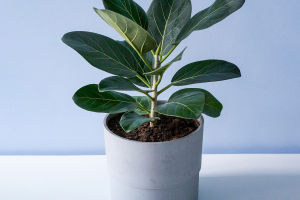Cacti, as unique succulent plants, not only stand out in terms of ornamental value but also have specific requirements for cultivation.
This article will introduce the methods of planting cacti and the considerations needed, to help you cultivate these beautiful plants more effectively.
Methods for Planting Cacti
1. Selecting Suitable Cactus Varieties
- Different types of cacti have different growth habits and cold tolerance, so it's important to choose varieties that suit your environment and care abilities.
- Some common cactus varieties include spherical cacti, branching cacti, and basket cacti, each with distinct shapes and flower colors.
2. Choosing the Right Container
- Cacti thrive in containers with good drainage, such as those made of stone, terracotta, or specially designed succulent pots.
- Ensure the container has drainage holes at the bottom to prevent waterlogging and root rot.
3. Soil Selection
- Cacti prefer loose, well-draining soil. You can use specialized succulent soil or make your mix, such as a blend of peat moss, perlite, and pumice.
- Avoid soil with too much organic matter to prevent the cactus roots from waterlogging.
4. Planting the Cactus
- When planting, take care to protect yourself as cacti have spines. Use newspaper or thick cloth to shield your hands.
- Gently remove the cactus from its original container, check for any signs of pests or diseases on the roots, and place it into the new soil.
- Avoid planting the cactus too deeply; a light covering of soil on the surface is sufficient.
5. Light and Temperature
- Cacti thrive in ample sunlight but should be protected from intense, direct sunlight to avoid sunburn.
- During the growing season, temperatures between 15-30 degrees Celsius (59-86 degrees Fahrenheit) are ideal. In winter, protect them from cold drafts and frost by keeping them indoors in a warm environment.
6. Watering Management
- Cacti have low water requirements. Wait until the soil is completely dry before watering, and ensure excess water drains away.
Considerations
1. Avoid Overwatering
- Overwatering is a common issue with cacti and can lead to root rot. Water moderately during the growing season and keep them dry in winter.
2. Pest and Disease Control
- Regularly inspect the cactus for pests and diseases, especially on the leaves and roots.
- Using insecticides or wiping the leaves with alcohol-soaked cotton balls can effectively control pests.
3. Regular Fertilization
- Moderate fertilization during the growing season can promote cactus growth, but avoid excessive fertilization.
- Use specialized succulent fertilizers and follow package instructions.
4. Avoid Drastic Temperature Changes
- Cacti are sensitive to drastic temperature changes, so protect them from exposure to extreme cold or heat.
5. Proper Pruning
- If the cactus develops unhealthy branches or leaves, use clean, sharp scissors to prune them.
- Allow the cut wounds to dry before placing the cactus back into fresh soil.
Conclusion
While cacti may seem resilient, they still require careful attention.
Selecting the right variety, providing suitable growing conditions, managing water and fertilization correctly, and regularly checking for pests and diseases are key to cultivating healthy cacti. Hope this article helps you better enjoy the pleasure of growing cacti and find satisfaction in their care and maintenance.


